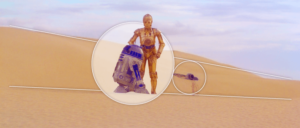If your Website primarily serves a business-to-business (B2B) market — for instance, if you’re a freelancer selling Web development services to business customers — you already realize that your clients are different from the average consumer. Your site may also have different objectives depending on the product or service you provide.
Cultivating Relationships – The Theory
To cultivate B2B relationships with your online presence you’ll need to consider the following strategies.
1. Understand the differences between B2C and B2B relationships.
Business relationships are fundamentally different from consumer relationships. B2B relationships are primarily developed around the needs of a group, measured primarily by ROI and financial requirements, as well as increasing the company’s capital.
In contrast, consumer sites provide entertainment, address the needs of individuals, and are primarily measured by enjoyment and personal wishes. While business relationships may contain personal relationships, their primary purpose is to serve the needs of a third party, and the individual who’s making the purchase on behalf of the business.
2. Educate your visitor primarily in ways your product can help them.
Your B2B visitors come to your site to get something that will benefit them, and they’re more likely to need additional information with which to justify the purchase than would a consumer.
Provide your visitor the information they need to make a decision, plus materials that will help them sell the idea to those who sign the check. Give the visitor what they need to convince others that buying from you is a good idea. How? By explaining the benefits of your product more than talking about your company.
3. Know the value of each of the key type of B2B relationship.
There are five key types of business relationships:
- partner
- employee
- customer
- community and
- industry.
More relationship types may be available depending on your supply chain model or distribution relationships, but you should concentrate on these five first.
Know the needs of each type of business relationship as it pertains to the user’s reasons for visiting your Website. If your site’s purpose is to sell a product, then concentrate primarily on the “customer” and “industry” types of relationships.
4. When addressing multiple relationships it’s important to address each type individually.
It’s not practical to expect your visitors to go right to the pages that you have designed to solve their problems, so provide a simple path for them to get to the content they want. Develop site indexes that address groups of relationship types, and use navigation to guide visitors to the parts of your site that address their specific needs.
As a visitor navigates your site, the materials they receive should quickly get right to addressing their specific relationship type. Think of your Website as a sorting mechanism to lead visitors to the information they need, while categorizing them according to your site’s purpose.
5. Create strong B2B relationships by providing your target audience what they want.
While visitors navigate your site, you should provide them exactly what they came for, without distracting messages. It is very likely B2B visitors are in the middle of all their own concerns, looking for a specific answer to a particular question they have. Help them get what they want first, and then make an offer.
When your site clearly conveys what your visitor needs in order to get what they want, they tend to come back. For this reason, it’s important to align your site’s purpose with the visitor’s wants.
6. Focus on your target visitors’ wants, and exclude everyone else.
As it takes effort and resources to design your site around a B2B visitor’s wants, you should focus on only those visitors who advance your site’s objectives. The targeted nature of business relationships necessitates getting right to the point.
Focus exclusively on the needs of your target audience, even if it means you exclude everyone else. This makes good business sense because these visitors are likely to engage your company. You should not distract your ideal visitors with extras — focus on getting straight down to meeting their needs (after all, nobody says you can’t have more than one B2B site!).
7. Tune your strategy to cultivate business relationships.
To start tuning your strategy, you don’t have to change anything about what you are doing right now. Just begin to refine the way you communicate with your business-to-business visitor by trimming out the fat. How do you know what to trim? Contact and survey your customers — ask what they would like to see on your site, and what they like about your site. Then contact members of your target audience, and develop a profile of what they want, need, and expect from the type of site you provide. Shape your implementation around the purpose of your site, considering each different method as it supports your business objectives.
These strategies will get you started on the path to successfully serving a business-to-business market. Remember, you don’t have to provide everything on your Website — just those things that support the purpose of your site. If you must, publish other content on other people’s sites, but don’t clutter your site with things that distract your visitor from their requirements and your site’s objectives. It will only frustrate the business visitor and harm the relationship you’re trying to establish.
Applying the Theory
A simple formula to follow as you build your B2B site’s structure and design its pages, is:
A. Qualify (index pages, top screen).
Anticipate the reasons for the visit, and provide navigation grouped by either the purpose of visit, or the type of visitor. Depending on the amount of content you have, you could organize by both: where the B2B visitor clicks will identify who they are.
B. Educate (inside pages, page body).
Provide more information about what the visitor is looking for, bringing them further into your site to teach them about benefits. Don’t distract the visitor with sales messages or any non-contextual links.
C. Action (content pages, bottom page).
After you’re sure that the visitor got what they came for, make them an offer. This offer can be a sales request, a request for more information, an invitation to join a newsletter, or be contacted by a sales person.
Wrap your general site navigation around the formula above and you have your design for a single page. As the reader moves further down the page, they become increasingly qualified for the action you want them to perform. You give the reader what they want, bringing them closer to you what you want.
Cultivating Relationships – The Practice
These sites do a wonderful job of building a relationship with the visitor in a strictly business-to-business marketplace. Noted is each functional area by (A) Qualify, (B) Education, and (C) Offer.
(A) The landing page provides product information grouped by product type, with subcategories noting product characteristics of interest to the visitor. Note the product benefit after each link.
(B) When you click on a link at the subcategory, you are directed to the information related to the request with only simple navigation. No other sales pitches are provided, just the facts.
(C) At the very bottom of the page, you are provided two options: get more information, or buy a product at the store.
(A) The home page presents boldly the three things their visitors might want to do (transfer hosting, setup hosting, or manage hosting). The next line on the same page goes into more detail about the site’s primary purpose of setting up new hosting.
(B) They purposefully provide only high-level information, as qualified visitors already know what the terms mean and have an understanding of the technical aspects of the products on offer.
(C) After the short introduction, they get right to who to contact for more information.
(A) Navigation options on the front page are organized by industry, service, or product. Someone clicking on “Industry > Forestry” is likely interested in those types of products.
(B) They receive an overview of Caterpillar products and related benefits from the perspective of someone in that industry.
(C) At the bottom of the page, the visitor sees a link to find a dealer. A dealer locator form could further enhance this facility, so that the visitor’s next step from the page is to the information they want to receive.
Some of these points of interaction could overlap or intersect, but all primarily take the visitor from the general (browse for information) to a specific offer (to provide the information). This whole process happens while generating demographic information about visitors through their navigation paths, and points of response generation. Many B2B sites do not communicate to visitors that the business is interested in long-term relationships with each visitor. If you are in this position, then you will probably know just by looking at your income statement.
These Websites are great to model because the entire experience is about the visitor — most content is oriented towards the needs of the particular B2B audience that the business serves. Too many sites just talk about how great the company is, what they can do, the latest stock prices, and more things most visitors don’t care about. But if you serve your visitor first, they will come back and buy.
Whether you want to build a community, sell your services, or even report on industry news, ask yourself what you can do to keep those business-to-business customers coming back, while gaining valuable information you can use to serve them better?
Justin Hitt has been online since 1989, but things have changed quite a bit. He founded the conversion marketing agency JWH Consolidated. Has more than two decades of experience with content marketing and conversion rate optimization. Host of the AdBriefing Copywriting Tips podcast and more.


